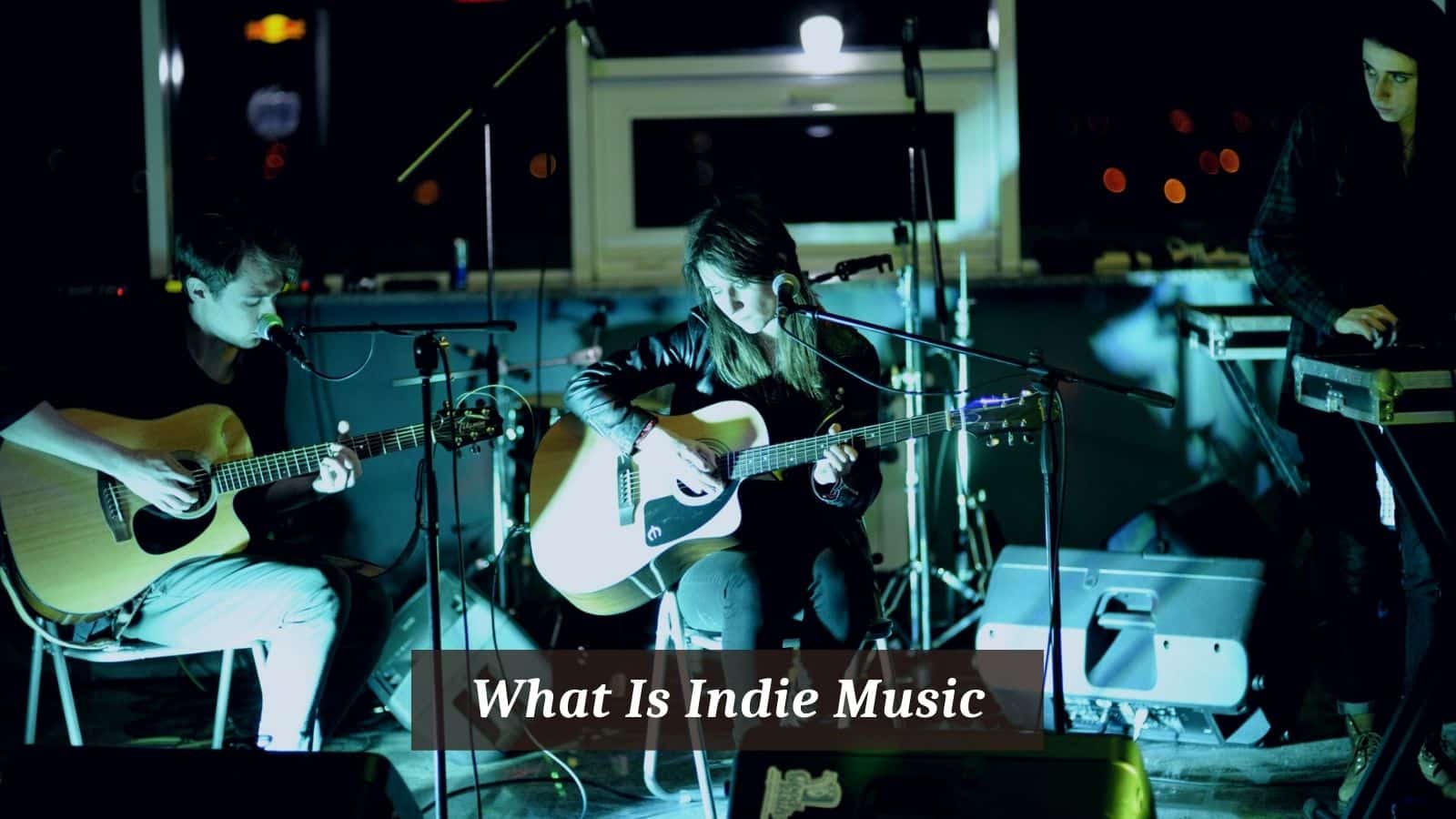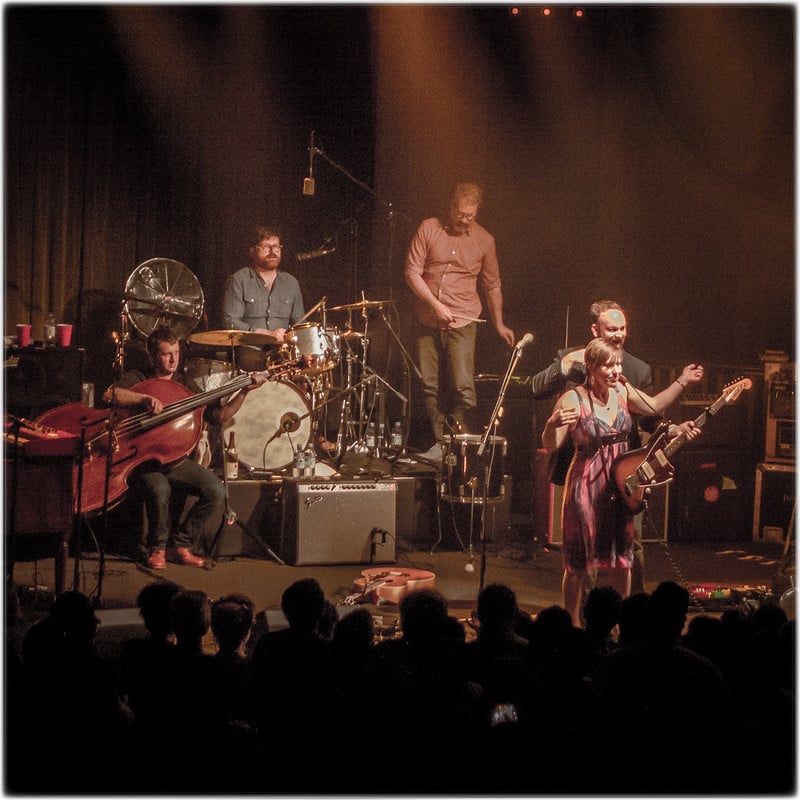
The most straightforward working definition of indie music is music that’s produced and released by an independent label rather than a commercial one.
But there is no definite answer, perhaps because indie is a vast and varied phenomenon.
What Is Indie Music
Defining Indie Music
Defining indie music is nearly impossible. Indie music is best described as a genre. Still, it is not a style of music because various kinds can fall under the umbrella of indie music. The term ‘indie’ is a not a genre, but rather a business model and a style of music.
By business model, we mean it isn’t associated with the three most prominent labels, Warner Music Group, Sony BMG, and Universal Music Group (bought EMI). These three make up around 80% of the general music market.
Not having a connection to the Big Three record labels is a rarity these days. Being independent means, artists can have control over their artist processes and how they produce and release their music. Indie artists can sometimes need the big labels to gain commercial success.
Indie Labels vs. Major Labels
A significant label offers artists the security of financial backing, but this comes at a price. Artists must deal with the pressure of the label to ensure their music is a commercial success, which usually comes with regulations and rules set out by the label.
trade-off is the fame the artists gain through the brands and their commercial backing.
Indie labels allow artists to express their creativity in any way they see fit. Unfortunately, indie labels do not offer artists large-scale financial investment or offer mainstream commercial fame. Indie labels provide artists the opportunity to make music without creative restrictions.
Is Indie Music a Genre?
There is no single ‘indie sound,’ and the styles and sounds are varied. But, is indie music a genre?
Although indie is not a genre per se but rather an aesthetic and conscious musical and artistic decision to release music independently from the Big Three labels, it is a varied land- and soundscape with a strong focus on individuality and independence.
Let’s explore some songs and artists within the indie subgenera to give you a better idea of the varied sonic landscape and fascinating world of indie music.
We’ll look at three prominent genres: indie folk, indie pop, and indie rock, with representative artists and songs linked to each.
Indie Folk
A core element of indie folk is acoustic rawness and simplicity. The vocals are natural sounding and heavier vibrato is not uncommon.
Folk instruments such as the acoustic guitar or similar stringed instruments usually form the accompaniment. Indie folk has its roots in folk music so the aforementioned shouldn’t be surprising.
Representative artists:
- Mawkin: Causley’s song L’homme armé features acoustic guitar, melodeon, and violin. Signed with wholly independent label Navigator Records specializing in roots and folk music.
- Katy Kirby – Cool Dry Place features acoustic accompaniment and some tracks with electric accompaniment as well as dealing with a focus on boredom and breaking the rules.
You can read more about indie folk artists here.
Indie Pop
This is indie rock’s more melodic and angst-free counterpart. It focuses on crafting songs and emphasizes harmony and lush arrangements.
Indie pop still embraces the DIY attitude of its predecessor, punk. It doesn’t get stuck in the mainstream zeitgeist, allowing it to produce music that’s free of punk music’s nihilistic attitude, and sometimes abrasive and noisy.
Representative artists:
- Florence + the Machine at once comes to mind as an indie artist because they fluidly move among many genres without ever settling on a particular one. Their music can be described as indie-rock inspired by soul music, even as alternative music. King and Dog Days Are Over are indie playlist-worthy additions.
- Belle and Sebastian hailed from Edinburgh in Scotland and started as a government-funded project in 1994. Their music is known for lush chamber pop orchestrations built on twee pop sentiments. Their debut album, Tigermilk, was released in 1994, and although it was a bit rough around the edges, they’re still going strong in 2023. I could be dreaming still sounds as fresh now as it did back in 1994, compared to their most recent release, I Don’t Know What You See in Me.
More information and artists can be found here.
Indie Rock
The most popular within the subgenera is indie rock, which combines rock’s driving rhythms with a gritty, DIY sound.
Indie rock can sometimes overlap with alternative rock to get more playtime on radio stations. The central tenet is creativity, skirting conventionality, and appealing to commercial and mainstream trends.
Representative artists:
- The Decemberists we’re talking about is the band formed in Portland, Oregon, in the US in 2000, not the one from 1984 formed in Liverpool, UK. Their songs range from upbeat pop numbers to almost-grunge rock, like The Rake’s Song, to lush instrumental ballads (June Hymn). They favor a storytelling approach, as seen in Once in my Life, over the introspection and angst-ridden lyrics and music commonly found in modern rock. Their music can also be described as ‘folk-tinged.’
- Vampire Weekend is slightly contentious. If you describe indie as a genre (which it isn’t), then yes, it is an indie rock band. However, if you describe indie as a business model, they aren’t indie. They started indie but later signed with Columbia, which isn’t indie at all… When you listen to A-Punk, there’s a distinct home-made, eccentric sound. When you compare A-Punk to Liberty Hall, do you hear a difference now they’re signed with Columbia? The sound is maybe ‘cleaner,’ but we think they kept their indie spirit and sound as heard in Oxford Comma (a pre-Columbia recording).
Following this link, you can discover more information, albums, and artists.
Conclusion
There is no definite answer to what indie music sounds like because there’s no definable ‘indie sound.’ To describe indie as a genre is not entirely correct; it might be best to describe indie music as a culture.
Indie music actively shies away from the mainstream and we’re invited to this journey.


